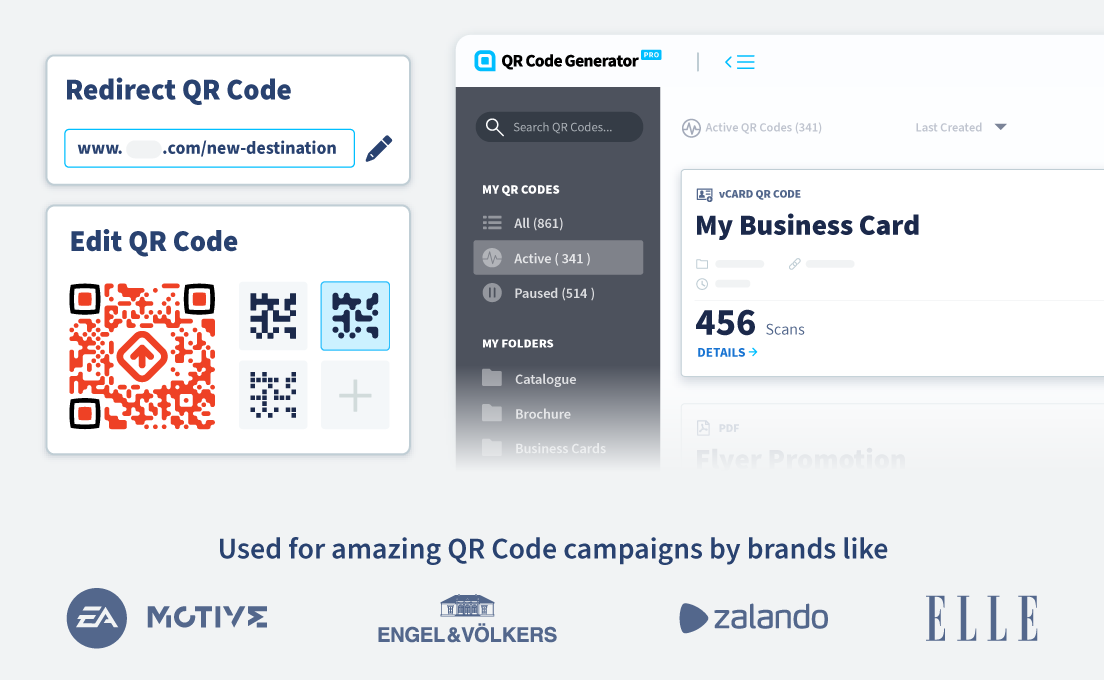- Best Practices ●
- COVID-19 ●
- Industry Trends ●
- Partners ●
- Product ●
The Role of QR Codes in Modern Air Travel and Flights
Navigating crowded airport terminals can be overwhelming and frustrating. However, many airlines and airports are implementing technology like QR Codes to help travel days run a little more smoothly.
Below, we’ll explore how QR Codes work in modern air travel and why they’re such an effective tool for both airline staff and passengers.
Benefits of using QR Codes for air travel operations
Historically, air travel has been a bit of a hassle for flyers. Even at the most well-run airports, the process of checking in, navigating security checkpoints, and boarding the plane just takes time. However, implementing QR Codes can make the process more efficient and convenient for everyone involved.
Increased efficiency
QR Codes make the flight check-in and boarding processes faster. Most major airlines now offer a mobile boarding pass option that uses QR Codes, which passengers can download before they get to the airport.
This makes check-in faster, as passengers don’t have to print out their airline tickets. Security and gate agents can also scan QR Code boarding passes quickly and easily. This makes each customer interaction just a little bit faster, which adds up to significant time savings for passengers and more on-time departures.
Right now, 41% of boarding passes are mobile, and projections show that number will increase significantly over the next ten years. While many passengers are already using digital boarding passes, there’s still plenty of room for further adoption across the industry.
Better passenger experience
Many passengers already have their smartphones out at the airport to check travel information, pass the time, and stay in touch with loved ones. In most cases, it’s easier for passengers to use QR Codes than to deal with printed boarding passes, paper menus, and other physical documents.
By using QR Codes for electronic boarding passes, airlines give travelers convenient access to their travel documents right on their phones. Plus, with strategically placed QR Codes at kiosks, restaurants, and on the plane, travelers can make purchases on their phones rather than having to pull out a physical credit card.
These small conveniences make the travel experience run smoother for everyone.
Reduced airline costs
QR Codes aren’t just convenient for passengers—they’re also beneficial for airlines. In particular, many airlines use QR Codes to cut back on operational costs. By using QR Codes, airlines have to print out fewer paper boarding passes, which helps them cut down on printing expenses.
Since QR Codes save time as well, they also help airlines cut back on operational expenses. QR Codes shorten customer interactions and make many airport processes self-serve, reducing the risk of delays and lowering labor costs.
More sustainable processes
One way for travelers and airlines to reduce their impact on the environment is to use less paper, and QR Codes help facilitate this. Passengers can download their electronic tickets on the airline’s mobile app, rather than printing off paper tickets.
Not only do these QR Codes get passengers on the plane, but they also provide access to TSA Pre-Check lines and airline lounges when applicable. This means that passengers won’t use paper documents at all during their boarding process.
Real-time information access
Placing QR Codes throughout the airport gives travelers convenient access to important information. For example, airports can place QR Codes strategically throughout the terminal with links to arrival and departure times, customs information, airport maps, and more.
This is particularly helpful for travelers who don’t speak the primary language used in the airport. Once they have the information they need on their phones, they can use translation tools to read it in their native tongue, preventing confusion.
Examples of using QR Codes in modern air travel
There are so many different ways to use QR Codes throughout the travel process, both at the airport and on the plane.
At the airport
For many people, getting from the airport entrance to the gate is the most overwhelming part of traveling. The terminals are often crowded, and it can be confusing trying to determine exactly where to go and what to do.
There are many places where airports can integrate QR Codes to streamline the experience—starting in the parking lot.
Airport parking lots can post QR Codes for each parking space, which travelers can use to pay. Many major airports already use this approach, including Louis Armstrong New Orleans International Airport and Southwest Florida International Airport.
Inside the airport, QR Codes are an efficient way to share information. For example, travelers could scan a QR Code at a self-service kiosk to access their flight information and luggage status in the airline’s mobile app.
At security, QR Codes can help verify passengers’ identities and speed up security checks. TSA allows travelers to present digital IDs on their mobile phones, many of which use QR Codes for verification.
Airport restaurants, bars, and lounges can also use QR Codes to share menus. In fact, concessions operator OTG recently launched QR Code menus that allow travelers to order food directly to their gates.
During check-in and at the gate
Many airlines rely heavily on QR Codes for e-tickets. Passengers can check in for their flights on their mobile devices and download digital boarding passes from the airline app.
When it’s time to board the plane, gate agents scan the QR Code for a contactless boarding experience. Major airlines like Southwest, Delta, United, and American Airlines have all been offering QR Code boarding passes for several years.
Airlines can place QR Codes with a link to their app or website at each boarding gate. These apps usually have features that allow passengers to upgrade their seats, check the status of their flights, and monitor their loyalty program rewards as well.
This makes it easy for passengers to stay in the loop regarding their flights and check out any current airline promotions.
On the flight
QR Codes are also an efficient way for airlines to share information with passengers during flights. For example, each seat could have cards with a QR Code directing passengers to the plane’s WiFi login and in-flight entertainment options.
Once connected to the internet, passengers can use QR Codes to order food and drinks, making service more efficient. For example, United Airlines accepts PayPal QR Codes for touch-free in-flight payment.
Airlines can also use QR Codes to share information about their destinations, including language and customs details for international travel. At the end of the flight, they can even use QR Codes to collect feedback from travelers.
Best practices for implementing QR Codes in the airline industry
In order to reap the full benefits of QR Codes, airlines should use these best practices to ensure their QR Codes are effective and accessible to both passengers and employees.
User-friendly design
Using a QR Code at the airport should be intuitive. Each QR Code should be easy to see and large enough to scan with a smartphone camera. The same practices apply when using QR Codes on social media or in the airline’s mobile app.
QR Code Generator PRO allows companies to create Dynamic branded QR Codes. They can adjust the shape and color of their QR Codes and even add their logos, which helps passengers and staff instantly recognize the codes as part of the airline’s brand.
Customer education
People traveling through the airport come from all over the world and have varying levels of experience with QR Codes. All QR Codes should include clear instructions on how to use them. Make sure these instructions are available in multiple languages when necessary.
Each QR Code should also specify exactly where it leads, whether that’s a website, social media page, or app download. This helps increase trust among users.
Additionally, airline and airport staff should be highly familiar with QR Codes. They should encourage customers to use them and be readily available to answer any questions or provide assistance.
Compatibility with various devices
Not everyone uses the same mobile devices. In the U.S., most travelers use either Apple or Android devices, but international travelers may use different brands altogether. Before launching QR Codes, test them with a wide range of devices to make sure they work correctly.
QR Codes also need to be compatible with airport scanners. Airlines launching digital boarding passes should work with airports to make sure they have compatible scanners available.
Using QR Codes to power your airline experience
QR Code technology has the potential to make air travel more comfortable and accessible for everyone. It’s an effective way to streamline the check-in and boarding processes, share information with passengers, and improve in-flight sales.
QR Code Generator PRO makes it easy to generate custom Dynamic QR Codes that fit the company brand and offer a seamless, reliable experience for staff and passengers alike.
Try QR Code Generator PRO today to bring your air travel into the future.






 Add custom colors, logos and frames.
Add custom colors, logos and frames.
